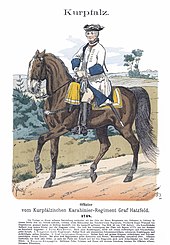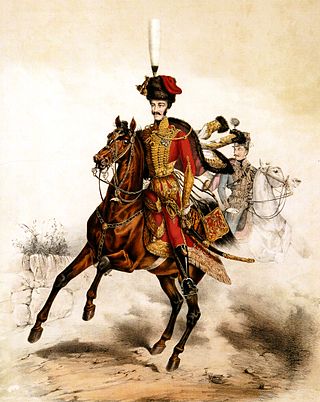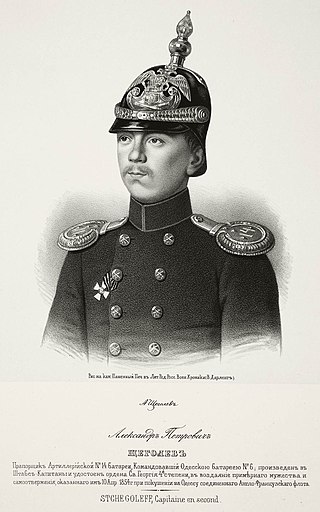
Rittmaster (German: Rittmeister, literally: riding master, cavalry master) [1] is or was a military rank of a commissioned cavalry officer in the armies of Germany, Austria-Hungary, Norway, Sweden, Denmark, and some other countries. A Rittmeister is typically in charge of a squadron (a company-sized unit called a "troop" in the United States, as opposed to the U.S. cavalry squadron of larger battalion size), and is the equivalent of a Hauptmann rank (or captain in most army branches). [2] [3]
Contents
The Dutch rank Ritmeester, is the rank of squadron leading officers in the cavalry units of the Royal Netherlands Army. [4]
The Norwegian rank, rittmester/rittmeister, is the rank of officers in the armoured and mechanized infantry units of the Norwegian Army. The spelling ritmester was used in Norwegian until 1907.
- Swedish : ryttmästare
- Danish : ritmester
- Norwegian : rittmester (bokmål; the spelling ritmester was used until 1907) or rittmeister (nynorsk)
- German : Rittmeister (until 1951)
- Estonian : rittmeister
The armies of Poland, Finland, Lithuania, and Russia adopted a localised term for the similar rank.
- Polish : rotmistrz,
- Finnish : ratsumestari,
- Lithuanian : rotmistras,
- Russian : ротмистр (rotmistr).
In the Polish army (from the 15th century to the mid-20th century) a rotmistrz commanded a formation called a rota . However, a rotmistrz of hussars was a commander of between 100 and 180 hussars, with a lieutenant of hussars as his second-in-command. The Lithuanian term was rotmistras.[ citation needed ] In earlier times, the rotmistrz served as the commander of an infantry or cavalry company, though sometimes he would temporarily be assigned field rank tasks e.g. commanding an entire regiment or even a larger formation. In the cavalry, the rank continued until 1945 as a company level title. Applied to the commander of a troop, it was equivalent of a modern-day captain.
The rank was also adopted by Russian New Regiments as rotmistr (ротмистр) and later formalized in Table of Ranks as the cavalry post; until 1798, and between 1883 and 1918, a lower-ranking shtabs-rotmistr (штабс-ротмистр) also existed, representing the ranks of Senior Captain and Junior Captain in the Russian Imperial Guards Cavalry, Army Cavalry, Gendarmerie and Border Guards by 1914.
In British and Commonwealth military forces, a Riding Master is not a rank. In the Household Cavalry Regiment a suitable Warrant Officer with the rank of Riding Instructors is appointed Riding Master. The duration of this appointment is determined by the commanding Lieutenant-Colonel and, once appointed, the Riding Master is the person in the lead of training of recruits and horses of the Household Cavalry Regiment. [5]






